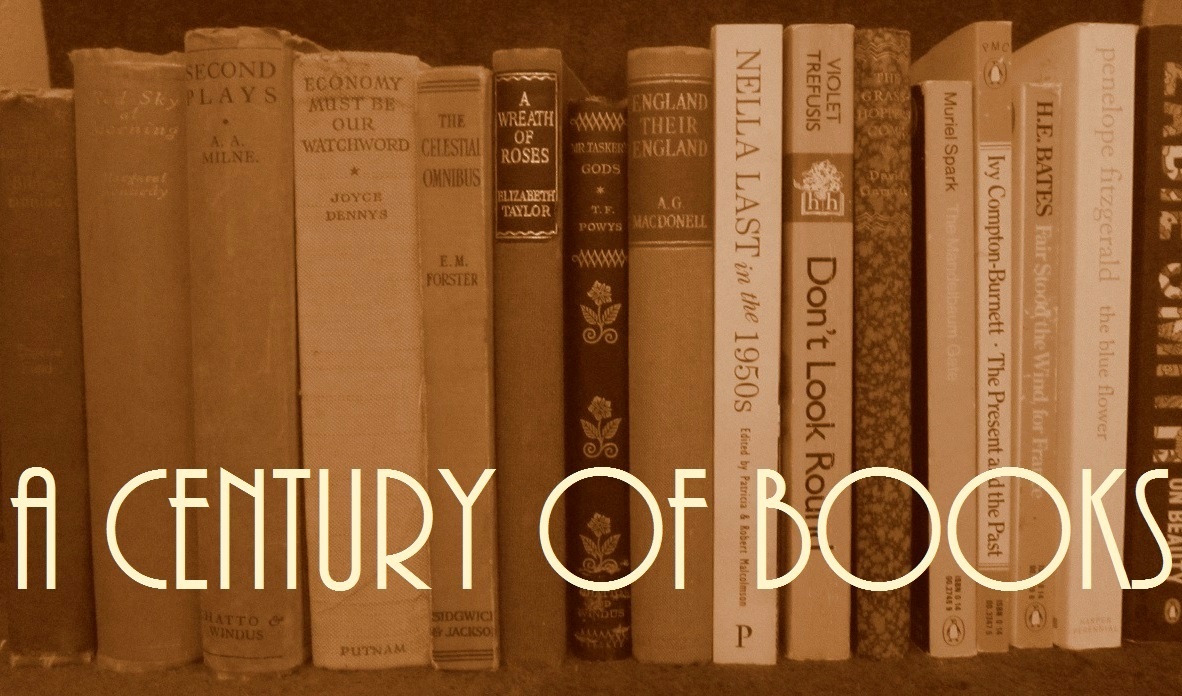
The 1990 New Canadian Library edition of Hetty Doval has an inapt cover illustration. Its reproduction of an E.J. Hughes painting depicts coastal Ladysmith, B.C., a rather different locality (though they share a water’s edge location) to arid inland Lytton and its rivers descending from the mountains.
Hetty Dorval by Ethel Wilson ~ 1947. This edition: McClelland & Stewart, 1990. New Canadian Library edition. Afterword by Northrop Frye. Paperback. ISBN: 0-7710-8953-8. 104 pages.
Canadian-by-circumstance writer Ethel Wilson – born in South Africa, orphaned at the age of ten and brought to Vancouver, B.C. to live with her grandmother – produced a sadly meager handful of very well regarded novellas, novels and short story collections, all sharing themes of strong female protagonists and distinct senses of place.
In Hetty Dorval the place is the tiny Fraser Canyon community of Lytton, British Columbia. Ethel Wilson captured its unique essence perfectly, as I can affirm to, having spent some time there myself, the latest occasion being a day-and-night stay just a month ago. Though I didn’t consciously choose to read the novella in response to that recent experience, I found it added a definite piquancy to my reading.
Twelve-year-old Frances Burnaby – “Frankie” – is a ranch child boarding in Lytton during the week to attend school. She rides the fifteen miles to and from her home with calm competence, quietly revelling in her good fortune of having a loved and loving family, congenial friends and acquaintances, and physical surroundings of immense natural beauty.

The blue Thompson meets the silt-laden Fraser at Lytton, viewed from the bridge over the Thompson, where Frankie would have stood. The joining of the two rivers is used as a strongly symbolic metaphor throughout Hetty Dorval, its most obvious representation being the meeting and melding of innocence and its opposite.

Coming into Lytton from the north, a view much as our fictional Frankie would have had almost a century ago; the village hasn’t changed all that much; its setting not at all.
Not much happens in quiet little Lytton. Life for Frankie follows a predictable pattern of school and after school ramblings with best friend Ernestine. When the train pulls into the village’s tiny station, Frankie and Ernestine are there to watch as often as they can get away with it, “hanging out” by the train station being gently frowned on by the adults in the girls’ lives. (Social mores are predictably strict as the novella’s start is set in the early 1930s.)
So there they are at the train station, standing among the lounging bystanders, and there they see the household effects of newcomer Mrs. Dorval being unloaded – crates and crates of household effects, a grand piano, and a large Newfoundland dog. These are collected by a quiet grey-haired woman; the girls assume she is Mrs. Dorval, but they are wrong.
The real Mrs. Dorval turns up a few days later, and she proves to be quite the stunner. Young, beautiful, an accomplished horsewoman, musician and singer, both Frankie and Ernestine find her fascinating enough to mildly stalk in their adolescent way, collecting what information the local gossips can provide (not much) and trailing by the isolated bungalow Mrs. Dorval has rented and staffed with a housekeeper, the elderly Mrs. Broom (nicknamed by Hetty “Mouse”), and has turned into a retreat from the world. She does not encourage callers.
Frankie meets Mrs. Dorval one day while both are out riding, a spark is struck between the two of them, and while Frankie’s emotion is that of a garden variety schoolgirl crush, we’re not quite sure why Mrs. Dorval encourages her company. “Call me Hetty”, orders Mrs. Dorval, and though Frankie can’t quite bring herself to breach social etiquette between children and adults to this degree, she is happy enough to be plied with tea and treats and to provide an audience for Hetty’s musical performances. Frankie falls in with Hetty’s request to not tell anyone about her on-the-sly visits to the bungalow, and the infatuated Frankie complies, but inevitably someone catches on and word gets out, and Frankie comes home one weekend to a stiff grilling by her concerned parents.
An “unsavoury story” has followed Hetty Dorval from her last port of call – exotic Shanghai, a long way indeed from Lytton – and Frankie’s parents are appalled that their daughter has been co-opted into Hetty Dorval’s questionably moral establishment. Frankie’s mother won’t divulge the nature of Mrs. Dorval’s past history to her innocent daughter, but she is adamant in her condemnation, calling Hetty, with dry almost-humour, “The Menace”, and when she asks Frankie to break off the acquaintance, Frankie reluctantly complies, going back just once to say goodbye, which seems to be harder on her than on the jaded Mrs. Dorval, who sighs and takes it all in stride.
She looked at the fire a minute and then went on. “I know what they’ve told you, Frankie. They’ve told you I’m bad. You must try to believe,” she turned her brilliant look on me, “that I’m not bad, and that if you knew a little more you’d understand about it. Can you believe that? . . . Do you think I’m bad, Frankie?” she said, laughing a little.
I almost whispered, “No.”
“Try and stay my friend,” she said. “Even if you can’t come to see me, try and stay my friend . . . Very well . . . Good-bye . . . ” and with as little emotion as she would have shown in saying good-bye to the postman she got up – she did not come over to touch me – and went into her bedroom and shut the door. It made it easier and harder that she did not come and touch me. She left me standing in the suddenly withdrawn intimacy of the firelit room, with only Sailor sleeping there on the hearth.
I had stood only a moment when Mouse, who must have been listening, came into the room. She opened the front door. “You’d best be going,” she said. And I went.
As Frankie matures and moves out into the wider world – boarding school for a year in Vancouver, then off to England and the Continent – she finds herself once more crossing paths with Hetty Dorval, and the true nature of the woman at the centre of that childhood infatuation becomes ever more apparent, to Frankie’s growing dismay.
Is Hetty truly the menace that she seems to be? The label of “Narcissist” seems to fit perfectly, but how did Hetty get this way? What emotional scars (if any) has she hidden behind her beautifully emotionless face? Esther Wilson gives what might be telling clues, but denies a final judgement, leaving the reader to ponder possibilities…
Hetty Dorval is a memorable example of the novella form, and it is no wonder that it was chosen by the esteemed Persephone Press for reprinting in 2015. Persephone’s expanded review is well worth reading, though it does contain a number of “spoilers” – first time readers may wish to wait till after to peruse this one.
An easy 9.5/10 for Hetty Dorval from me. Very close indeed to perfect. (I’m still mulling over what exactly Hetty was after regarding the childish Frankie. Was it merely moral predation, or something more sexually sordid? The author leaves a lot unsaid, but my 21st century mind speculates and wonders… Fellow readers, what did you think?)
I have had a similarly positive response to two other of the writer’s novels, Swamp Angel – read in 2016 but not yet written about – and The Innocent Traveller, posted about in 2013 here.
I do love the settings, because I know them so very well in real life, and though my Captive Reader friend Claire might differ regarding long passages of description (she’s not keen!) I’m always a sucker for a good word-picture of a place. The stories transcend their setting; for a native British Columbian it’s merely an added bonus. We agree on the essentials: good stuff from Ethel Wilson!

The view from behind the railway station at Lytton taken in mid September, 2017, looking northward up the Fraser River. All symbolism aside, Ethel Wilson’s vivid descriptions of the setting of her story demonstrate the strong emotional appeal of certain geographies on susceptible human emotions. Genius loci is discussed at some length, and the term is most apt.








Oh I’m so glad to see this. It’s one of my favourite novellas, its place and subject perfectly aligned with the brief elliptic form. It always makes me yearn for the bridge above the rivers, the place where they meet, blue and brown, and I’ve even rafted down the Thompson for the sense of entering that particular marriage. There are awkward moments in the book (mostly towards the end, to my mind) but quite honestly I wouldn’t want it to change. That moment where Frankie and Hetty meet, on their horses, and when they see the wedge of geese in the sky– sublime!
Isn’t this a beautifully crafted piece of writing? I found it slightly surreal to come to it with pre-knowledge of the setting; I found myself critiquing the descriptive passages to see how well they fit the real place; I was relieved that everything clicked. But how must it all read to those unfamiliar with it?!
I’m not quite sure about the true nature of Hetty Dorval. Is she indeed the unredeemable creature she appears to be, or do all of those hints which Ethel Wilson provides have a deeper meaning? What an ending this novella has. Absolutely fitting, absolutely unsatisfying! (In a very good sort of way.)
The marriage of those two rivers is decidedly compelling – how fortunate to be able to experience it at first hand, as it were! When we are in Lytton we find ourselves inevitably drawn to that vantage point on the bridge, to stand there and watch in endless fascination the meeting of the waters, and the absorption of the blue into the brown. We live beside the Fraser ourselves, much farther north, and there is that wondering awe of knowing that those waters have passed by our doorstep, as it were, to go on to greater and greater things, the ocean at the ultimate end of its flow, when the great silty Fraser – comprised of the waters of how many tributaries! – itself becomes a part of a greater thing.
Lovely photographs, I can see why so many Scots settled down in Canada. I suspect that the book won’t be easy to find outside Canada, but I’ll look out for it.
Persephone Books published a lovely edition…
A brilliant debut, and one of the great Canadian novellas. I couldn’t risk the chance of you not knowing of the beautiful 1967 Alcuin Society limited edition signed by Ethel Wilson, typographer Charles Morris, and illustrator Gus Rueter. Very Good copies are listed for sale online beginning at under $30. A ridiculously low price. I paid much more for mine in the days before Abebooks and don’t regret the purchase. If interested, you can see images here.
Nice. I wasn’t familiar with that edition. One for the wish list, definitely. Thank you.
(PS – The Dusty Bookcase – book version – came some time ago. Thumbs up. Well, except for that last “bonus” bit. Some things once read can never be erased from the brain, and I very much fear that this will be one of those things. Worst Sex Scene in Canadian lit, indeed. Brian, Brian, Brian…)
Thanks for the thumbs up. Yes, that last entry should’ve come with a warning. In my defence, the novel I quoted didn’t come with a warning either. Mork & Mindy is forever ruined for me.
I had to laugh. In an awkward, more than slightly horrified way. The things we find on the dusty bookshelves of Can Lit! Some absolute gems. Some not. Ha!
[…] « Genius Loci and an Elusive Narcissist: Hetty Dorval by Ethel Wilson […]
I love her books and the descriptions of places I’m familiar with and her female characters. but her attitude towards Indigenous characters in her books are so racist and cringeworthy…I’m thinking of ‘jokes’ like how the two Indigenous boys are named Charley Joe and Joe Charlie, and then comments about laziness and bad conduct etc etc. When you pull back and think those Indigenous people from Lytton would have been returning from surviving Kamloops Residential School and living with that experience, it makes the ‘jokes’ she includes even more unsettling.